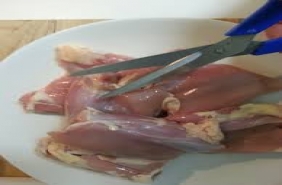Public health issues
Dr. Jayesh V,
27 - Jun - 2015
Issues with KFD for the Veterinarians of Kerala

Dr. Jayesh.V, Secretary, IVA,Wayanad
Kyasanur Forest Disease (KFD) is a recent entrant into the zoonotic spectrum of Kerala, though the first incidents of its outbreak had been reported from Karnataka about 60 years back. It affects both black langur as well as bonnet monkeys. The virus causing this disease is an arbo virus (vector borne) and belongs to the family Flaviviridae which have the potential to persist for long .The disease has spread from the initial hotspot of about 160 acres in Sagar Taluk of Shimoga district to other districts of Karnataka and now to the adjoining state of Tamil Nadu and Kerala. Scientists have attributed either increasingly efficient surveillance measures or climate change linked epidemiological factors to the spread of this disease.
Ticks are the vectors for KFD. Though the virus has been isolated from about 16 tick species, Haemophysalis spinigera is the major vector. Ticks follow a biological calendar in that during the months from June to August the adult tick population peaks. The well fed adult lays eggs in large numbers and the larvae that come out feeds on small mammals like rodents. However these larvae are generally dormant and localize in the forest litter and become active after the monsoon months ie from October onwards. Their maximum activity is during the periods from December to March. These nymphs are voracious feeders and they have enough viral loads to transmit to the bitten animal/man. Researchers have shown that cattle which venture into forests harbour adult ticks mostly and they have a low viraemia and hence the role of domestic animals in the disease transmission is not proven.
It’s reported that outbreaks of KFD in human populations will be preceded or accompanied by large scale monkey deaths. This has been true in Wayanad too. Monkeys either terminally ill or dead have been brought to selected veterinary points for diagnostic procedures and medical care. Monkeys are the amplifying hosts, small mammals the maintenance hosts and men the accidental hosts for KFD.
Disease in man is biphasic and the first phase of fever with gastro intestinal symptoms is followed by grave neurologic deficit signs after 2-3 weeks. If good medical attention is not sought in the initial phase, the patient may turn critical later. Encephalitis, haemorrhagic fever and acute febrile illness are observed in humans for most of the tick borne viral diseases.
Disease in monkeys is characterised by sick monkeys losing their orientation, behaving drowsy, non-alert and non-feeding. Many of them get trapped in fences and traps, with self-inflicted trauma a common feature. Cerebral lesions including haemorrhages and inflammation are commonly observed.
Diagnosis is by PCR in early stages and serologic tests like CFT and ELISA in later stages. Virus isolation is not advocated in the absence of biosecurity level 3 and above laboratories. Prevention and control measures are the most important factors in management of KFD. The first and foremost step is not venturing into forests without genuine reasons, especially in nymph prone periods. Even if one has to enter a high risk area, the use of a suitable tick repellent based on medical advice (like DEET) is essential. Having a hot water bath after the forest trip is a practical measure. Feeding or handling monkeys in tourist spots or homesteads should be discouraged. In houses where monkeys enter, the clothes should be soaked in hot water and if ticks are found, a suitable acaricide should be sprayed in the house and premises.
Use of a lasting acaricide in cattle sent for grazing or in close proximity to forests is beneficial in controlled expansion of tick population. Pour on type applications of Flumethrin (1%),applied @1ml per 10kg body weight from poll region to tail base over the dorsal midline offer month long protection from ticks and is wash resistant. The chances of systemic toxicity are minimal with these drugs. Buffaloes have reduced tolerance to the pour on’s. Controlled burning of the premises and brushing the cattle are advised whereas manual removal of ticks may be risky to the person.
Vaccination with a formalin inactivated chick embryo fibroblast vaccine in a two dose regime is practiced with results and has to be periodically boosted. Vaccinating the occupationally risky groups and forest dwellers are recommended. However there are limiting factors to the wide spread use of vaccine in a large population like liver disorders, co morbidities, anaphylaxis etc.
Challenges for vets
Handling the sick/dead monkeys with minimal exposure risks and a practical bio security application are the first challenges. This should be followed by a suitable post mortem examination protocol with thrust for personal safety. A monkey isolation facility in the forests and a specially designed safe vehicle for transporting sick/dead monkeys are more scientific measures. The efficiency of a monkey neuter program with vets arranged solely for that is a promising area for our state. Disposal of the carcass by burning or burial is essential and should be entrusted to the Forest department personnel. A significant area of the district is left out from FMD vaccination since that include forests and the threat perception is high due to heavy tick population. Public health emergency was declared in a Taluk and post mortem on monkeys was ruled out. But in other areas post mortem is being done. A well laid out laboratory with facilities to complete fever panel checks is the need of the hour. The moot question is can the Department/KVASU take the lead for this. Wayanad is already declared a hotspot for more zoonoses in the coming years with Scrub typhus, Lyme disease, H1N1, etc emerging. Also in the animal husbandry sector, the quantum of animals being moved also is significant in this district. In the face of startling revelations by leading researchers that destruction of evergreen forests and their conversion to deciduous forests is a prime factor for a quantum leap in population of Haemophysalis spinigera ticks, we need to create more public awareness on the delicately balanced state of nature here. Better medical and veterinary specialities concentrating on diagnostics and control will definitely help the Government in finding timely solution than blame gaming. This is the right time for a concerted effort involving departments of Health, Animal Husbandry and allied sectors to see that vectors and vector borne disease are well contained .


